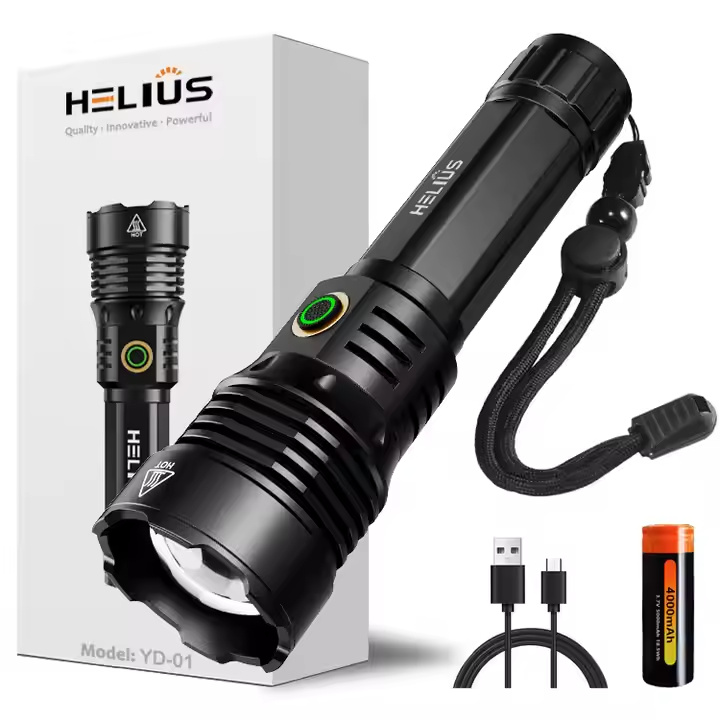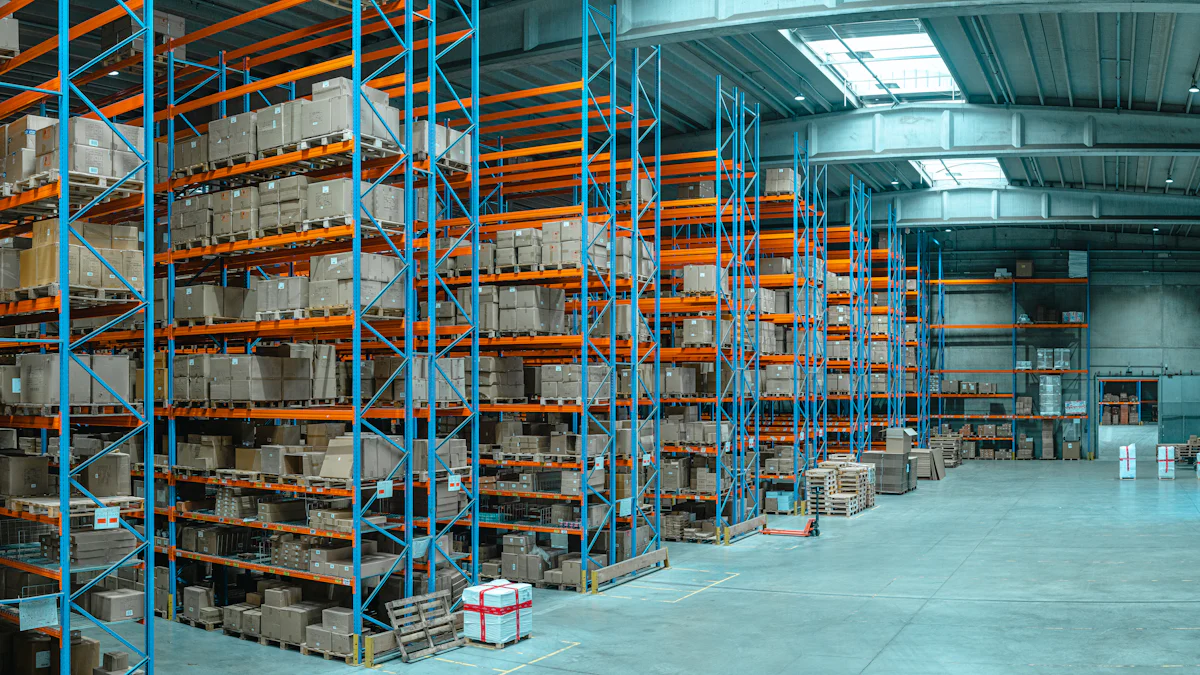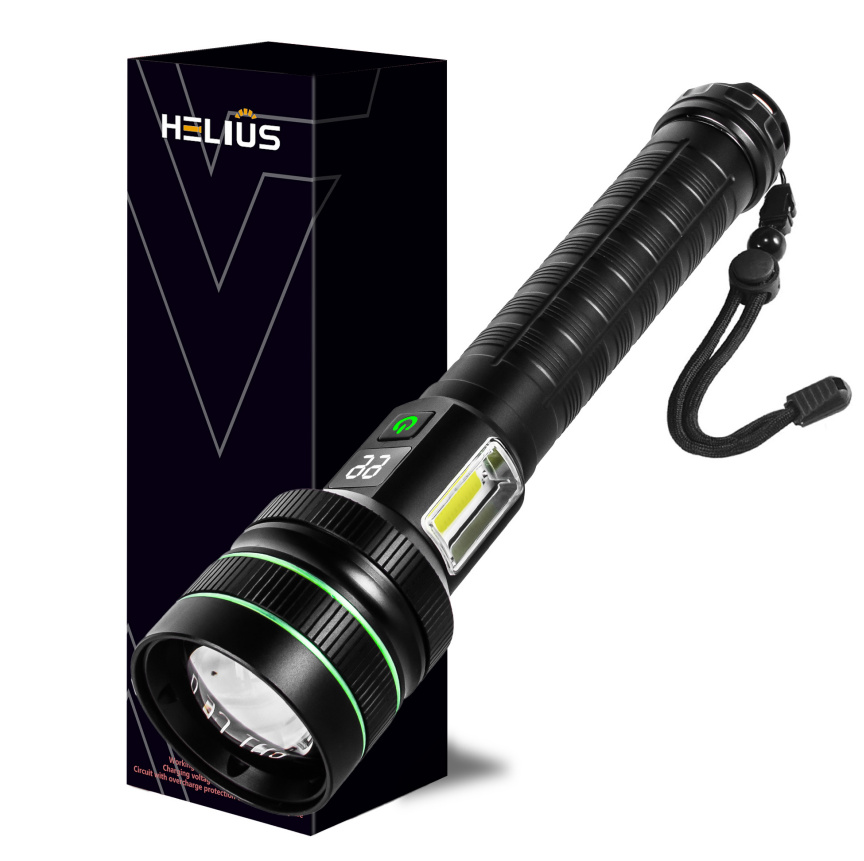Flashlight Manufacturing in the Middle East: Sourcing, Packaging, and Delivery

Flashlight manufacturing in the Middle East: sourcing is thriving due to growing demand and regional innovation. You play a vital role in ensuring the success of this industry by focusing on sourcing, packaging, and delivery. The region’s tactical flashlight market is expanding, with a projected CAGR of 5.2% from 2024 to 2031. Countries like the GCC and Egypt lead this growth, with market sizes of USD 2.92 million and USD 0.72 million, respectively. However, challenges like extreme climates and infrastructure gaps require creative solutions. By addressing these, you can unlock immense opportunities in this dynamic market.
Key Takeaways
Use strong materials like aluminum and modern LED tech for lasting flashlights.
Choose earth-friendly packaging to match what buyers want and boost your brand.
Work with trusted delivery companies to ship orders quickly and on time.
Add tracking tools for live updates to make customers happy and trust your brand.
Change packaging style to fit local traditions and connect better with people.
Flashlight Manufacturing in the Middle East: Sourcing

Regional Suppliers and Material Availability
Key flashlight components and their sources.
You need to focus on sourcing high-quality materials to ensure durable and efficient flashlights. Aluminum alloy is one of the most commonly sourced materials in the Middle East. It is lightweight, corrosion-resistant, and ideal for creating robust flashlight bodies. Many manufacturers also rely on advanced LED technology, such as 4x 519A LEDs, which deliver up to 3100 lumens and a beam distance of 191 meters. These components are essential for producing reliable products that meet market demands.
Evaluating supplier reliability and capacity.
When selecting suppliers, you should evaluate their reliability and production capacity. Look for vendors offering durable, water-resistant designs with features like IP68 or IP67 ratings. These ensure the flashlights can withstand harsh conditions. A supplier's ability to provide customization options, such as circuitry design and layout services, can also enhance your product offerings. Regular audits and inspections help you monitor supplier performance and avoid delays in the supply chain.
Material Quality and Sustainability
Importance of durable, water-resistant, and shockproof materials.
Durability is critical in flashlight manufacturing. You must prioritize materials that are water-resistant, shockproof, and capable of withstanding extreme climates. Aluminum alloy, combined with advanced LED technology, ensures long-lasting products with lifespans of up to 50,000 hours. These features make your flashlights suitable for both everyday use and tactical applications.
Compliance with safety and environmental standards.
Sustainability plays a vital role in sourcing materials. You should ensure compliance with safety and environmental standards to meet market expectations. Eco-friendly practices, such as using recyclable materials, not only reduce environmental impact but also enhance your brand's reputation. Adhering to these standards demonstrates your commitment to sustainability and responsible manufacturing.
Cost-Effective Procurement Strategies
Balancing cost with quality in sourcing.
Balancing cost and quality is essential in flashlight manufacturing in the Middle East: sourcing. Strategic sourcing helps you partner with suppliers who offer competitive prices without compromising on quality. Process optimization, such as automating production phases, reduces errors and increases efficiency. These strategies allow you to allocate resources effectively while maintaining high product standards.
Collaborating with suppliers for end-to-end solutions.
Collaboration with suppliers can streamline your sourcing process. Sharing information freely ensures transparency and better communication. Consolidating orders helps you achieve bulk discounts, while diversifying your vendor base reduces risks. By working closely with suppliers, you can develop end-to-end solutions that enhance efficiency and reduce costs.
Packaging Flashlights for the Middle Eastern Market

Packaging Materials and Sustainability
Eco-friendly and recyclable packaging options.
You should prioritize eco-friendly packaging to align with consumer preferences in the Middle East. Many consumers in the UAE value sustainability, with 56% considering recyclability a key factor and 47% favoring recycled materials. Using recyclable packaging not only reduces environmental impact but also enhances your brand's reputation. Incorporating refillable or reusable formats can further support your product sustainability journey. These efforts demonstrate your commitment to responsibly sourced materials and adherence to packaging sustainability guidelines.
Protective packaging for extreme climates.
The Middle East's harsh climate demands durable packaging solutions. You must use materials that protect flashlights from extreme heat and humidity. Corrugated packaging works well for heavier flashlights, while shrink wrap provides visibility and protection for smaller items. For premium LED flashlights, PVC box packaging offers a high-quality presentation. These options ensure your products remain intact during transit and storage, maintaining customer satisfaction.
Market-Specific Packaging Design
Adapting to cultural preferences and local languages.
Adapting your packaging design to local cultures is essential for market success. Including Arabic text on labels fosters familiarity and respect for local languages. This approach helps your products stand out on shelves and enhances customer perception of your brand's alignment with cultural identity. By tailoring your packaging to regional preferences, you create a stronger connection with your audience.
Branding and visual appeal for market differentiation.
Your packaging should reflect your brand's identity while appealing to local tastes. Vibrant colors, sleek designs, and clear branding can differentiate your products in a competitive market. Highlighting features like LED technology or water resistance on the packaging can attract attention. A well-designed package not only boosts visual appeal but also communicates the quality and reliability of your flashlights.
Cost and Efficiency in Packaging
Streamlining packaging processes for cost savings.
Streamlining your packaging processes can significantly reduce costs. Bulk buying minimizes single-use materials and simplifies inventory management. Using fewer materials lowers expenses while supporting sustainability goals. For example, corrugated packaging ensures durability for heavier flashlights, while shrink wrap reduces waste for smaller items. These strategies optimize your end-to-end product journey and improve efficiency.
Bulk vs. individual packaging for different market needs.
Choosing between bulk and individual packaging depends on your target market. A bulk LED flashlight package reduces shipping expenses and minimizes packaging waste. It also simplifies logistics and lowers carbon emissions. Individual packaging, however, suits retail customers who prefer ready-to-sell products. Balancing these approaches allows you to meet diverse market demands while maintaining profitability.
Delivering Flashlights Across the Middle East
Regional Logistics and Infrastructure
Navigating infrastructure challenges in remote areas.
You face unique challenges when delivering flashlights to remote areas in the Middle East. Many regions lack well-developed roads and transportation networks, making it difficult to reach customers. To overcome these obstacles, you can partner with local logistics providers who understand the terrain and have experience navigating these areas. Using smaller, more agile vehicles can also help you access hard-to-reach locations. By planning routes carefully and leveraging local expertise, you ensure your products reach even the most isolated customers.
Addressing customs and regulatory requirements.
Customs regulations in the Middle East vary by country, and navigating them requires careful preparation. You should familiarize yourself with the specific requirements of each market to avoid delays. Ensure all documentation, such as invoices and certificates of origin, is accurate and complete. Establishing relationships with customs brokers can streamline the process and reduce the risk of errors. Staying compliant with local laws not only speeds up delivery but also protects your business reputation.
Best Practices for Delivery Efficiency
Partnering with reliable logistics providers.
Selecting dependable logistics providers is crucial for maintaining delivery efficiency. Look for partners with a proven track record of on-time deliveries and minimal damage rates. Regularly review their performance and set clear quality standards. Establishing transparent communication ensures you address potential issues quickly. Reliable partnerships help you deliver high-quality flashlights to your customers without unnecessary delays.
Implementing tracking systems for real-time updates.
Tracking systems improve visibility and help you monitor shipments in real time. Advanced tools allow you to track inventory levels, reducing the risk of stock shortages. Monitoring packages regularly ensures you catch delays early and adjust plans as needed. For example, 38% of customers prefer SMS updates, while 19% track shipments multiple times daily. Providing these options enhances customer satisfaction and builds trust in your brand.
Ensuring Product Safety During Transit
Protective measures for fragile and high-value shipments.
Protecting your flashlights during transit is essential, especially for high-value LED models. Use sturdy packaging materials like foam inserts or bubble wrap to prevent damage. For bulk shipments, consider reinforced pallets to secure the products. Labeling packages as fragile ensures careful handling by carriers. These measures safeguard your products and maintain their quality upon arrival.
Mitigating risks from extreme temperatures and handling.
The Middle East's extreme temperatures can affect the performance of your flashlights. To mitigate this, use insulated packaging to shield products from heat. Choose materials that can withstand temperature fluctuations without compromising durability. Proper training for handlers also reduces the risk of damage during loading and unloading. By taking these precautions, you ensure your flashlights remain functional and reliable for customers.
Sourcing, packaging, and delivery are the backbone of flashlight manufacturing in the Middle East. Each stage demands your attention to detail and strategic planning.
Key takeaways include:
Bulk orders reduce trips and waste, cutting costs and emissions.
Just-in-time inventory and automation improve efficiency.
Reliable shipping partners and tracking tools ensure timely deliveries.
The region’s defense and security sectors drive demand for durable flashlights. By adapting to harsh climates and forming global partnerships, you can overcome challenges and thrive in this growing market. Embrace these strategies to build a sustainable and competitive business.
FAQ
What makes a flashlight suitable for extreme climates?
A flashlight designed for extreme climates uses durable materials like aluminum alloy. It includes features such as water resistance and shockproof construction. LED technology ensures reliable performance in high temperatures or humidity. These qualities make it ideal for harsh environments.
How can you ensure the safety of LED flashlights during transit?
You can use protective packaging like foam inserts or bubble wrap. Insulated materials shield the flashlights from extreme temperatures. Proper labeling and reinforced pallets prevent damage during handling. These measures maintain the quality of LED flashlights upon delivery.
Why is sustainability important in flashlight packaging?
Sustainability reduces environmental impact and aligns with consumer preferences. Using recyclable or reusable materials enhances your brand's reputation. Eco-friendly packaging also supports long-term business goals by meeting regulatory standards and appealing to environmentally conscious customers.
What are the benefits of using LED technology in flashlights?
LED technology offers energy efficiency, long lifespans, and bright illumination. It reduces power consumption while providing consistent light output. LED flashlights are durable and suitable for tactical or everyday use. These benefits make them a preferred choice in the Middle Eastern market.
How do you choose the right packaging for flashlights?
You should consider the product's weight, size, and target market. Corrugated packaging works for heavier flashlights, while shrink wrap suits smaller items. For premium models, PVC boxes provide a high-quality presentation. Tailoring packaging to market needs ensures customer satisfaction.
See Also
Comprehensive Overview of Flashlight Production in China
Essential Insights on the 2024 Flashlight Market in America
Important Factors to Consider When Choosing Flashlight Suppliers
Boosting Revenue by Sourcing Flashlights from Wholesalers
2024 Trends in Flashlight Wholesale: Affordable Private Label Choices
